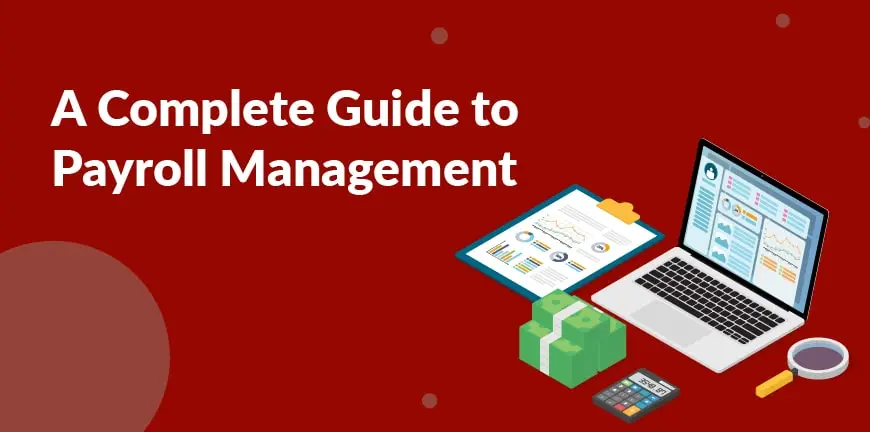
The State of Work with AI and ML in 2024
08/04/2024
10 Steps to Create a Recruitment Plan for Your Business
10/04/2024Managing payroll need not be a chore. But even if you are a small organization, there is so much you could do, beginning with going for a cloud-based payroll solution and reducing the number of people on your team to outsourcing payroll entirely to a third party. But before we get into what you could do, let us understand the HR and payroll processes first.
What is Payroll?
A list of the employees in a company and the amount they must be paid is called payroll. The process of paying these salaries is called the payroll process. There are several steps in the payroll process, regardless of who is handling the payroll. And there are several stakeholders too who are involved in the payroll process. Both HR and payroll processes are difficult to manage for any company and is best outsourced to a third party.
What are the Stages in Processing Payroll?
There are several stages in the processing of payroll by HR or its own department. These can be classified into three main stages, that of pre-payroll, actual payroll and the post-payroll processing.
1. Pre-Payroll Activities
Setting up the policies as per taxable income
An employer provides additional benefit components in addition to the salary to each employee. These are generally allowances paid to the employee in return for some work they have done or probably some expenditure they have incurred. Such allowances can be either exempt from or find tax applicable on them, either fully or partially. HR can help with payroll processes in this stage.
Defining Payroll Policies
The first step is to define and establish policies for HR and payroll. The payroll policy covers the administrative part of the payroll, including approval and rejection policies for leaves or reimbursements, the payment schedule in a particular department or even the pay scale for a particular job role. Aa an organization, it is important to ensure that you have a fixed payroll policy across the board, to maintain fairness and equality of opportunity.
Gathering Inputs/ Gathering Data
When gathering data for an employee for the purpose of payroll processing, there must be cooperation across several departments and the data must finally be consolidated by the payroll team itself.
Data for calculating employee salary includes leaves taken, the number of days worked, the number of hours logged in and even other parameters such as productivity on the job. In a company that has several employees on the job, to collect such data, it is worthwhile to use payroll management software.
Data Validation
Once you’ve finished gathering all the required data under HR and payroll, it is now to verify how valid the data really is. How do you ensure that all the data is correct and the truth and not just a representation of it. This step helps to avoid costly payroll errors that can cost your company millions in lawsuits.
2. Actual Payroll Process
In the actual process of payroll, the employee list is verified and updated to the most recent one, the salaries of the employees are calculated, and the salaries are credited based on the payroll cycle for each employee or team of employees. Before the salary is credited, a preliminary check may be performed to ensure that the right salary is credited.
3. Post-Payroll Process
Statutory Compliance
Statutory deductions such as EPF, ESI and TDS are made and the amount so deducted is then transferred to the respective government agencies. The frequency will vary depending on the type of dues. The reports are filed after all the dues are paid, which tallies the total paid and indicates the date the payment was made. This is a crucial role played by HR in the payroll management process.
Payroll Accounting
Is the payroll correctly accounted for by HR or the relevant payroll department? Can you match the payroll ledger with the general ledger? Are the numbers a good match? If not, you have a problem, and the accounting team may want to know why. You must also make sure that the payroll processing was done accurately and as per policy in payroll accounting.
Payout
You can pay salary by cash, though generally it is done by check or direct credit to the bank account. Debit advice is generated on the successful payout of salary from the corporate account to the salary account of the individual. The payout must happen at the right time and at the same time for all employees in the company.
Reporting
Once the payroll run is completed for a particular period, then the higher management or the finance team may want the payroll report shared with them with sections like job category-wise, location-wise, gender-wide etc. As a payroll officer, you are responsible for getting the data and sharing it with the right stakeholders.
Challenges in Handling Payroll Management Process
Maintaining Compliance with Laws
The labor laws in any country keep getting amended regularly. There is a need for HR and payroll teams too to stay aware of these latest updates so that statutory compliance is maintained in every payroll process in India.
This is not just because of the fines that firms would have to incur for non-compliance. It is also because of the benefits by way of government stipends they may get from being compliant, as is the case with the National Apprenticeship Scheme (NAPS) in India.
Errors in Calculation of Salary
The formula that was input may be too complicated or may have been incorrectly fed in, which led to an error. One way to overcome this easily is to outsource your payroll to an agency who will take care to ensure that such errors do not arise. Another alternative is to rely on tools that check for certain rules to ensure that the formulae and the calculations are right.
Protecting Payroll Data
Payroll data is crucial to process payroll in HR, and so it must be accurate, and it must be maintained securely and privately. But remember that payroll data includes some sensitive information about your employees which must be kept secure so that it is not shared with unauthorized sources, who can manipulate it to their advantage. Restricting the necessary staff only and allowing limited access to the payroll data are some of the things you could do.
Integrating Multiple Systems for Payroll
When legacy systems are moved to the cloud or when the HR and payroll systems are taken over by an agency, they may need to integrate the payroll system with theirs to migrate the data efficiently and to create formulas and set up calculations on the data. As such, if there are disparate systems in your payroll, then it will lead to data fragmentation, changes that don’t overlap etc.
Also Read: Payroll Management System Challenges
Methods of Processing Payroll
In-house payroll
In this type of payroll, the payroll management process is taken over by HR or separate payroll team within the company. Everything from compliance in payroll to calculating salaries to depositing them on time is carried out by a single in-house team. This is why it is called in-house payroll.
Cloud-based Payroll (Software managed)
A cloud-based payroll system is a significant advancement over an in-house payroll system as it provides an online cloud-based system.
This completely automates the payroll by moving all payroll data to the cloud and offering a set of tools that allows the payroll team to access the data, check for any issues and calculate and distribute the salaries.
Managed by Bookkeepers
Bookkeepers or certified public accountants also manage the payroll systems, particularly for medium-sized to larger companies.
Bookkeepers and CAs are adept in the payroll management process as they are professionals who have been practicing it for a while, but they will not be held responsible for any errors, for instance, an incorrect tax-based or other deduction.
Now when this occurs across a few accounts on the payroll, it can cause serious damage to the company in terms of compensation, if there is a lawsuit or the government takes notice.
Agency managed
This is the best way to manage payroll, as it allows a company to partner with an agency that handles the payroll processing and other related aspects of HR completely.
The agency also provides assurance that any errors in payroll calculations, stemming from errors in employee lists or groups or compliance with tax regulations etc., would be taken care of.
It’s the best of both worlds. It removes the effort of maintaining an in-house team and gives you the convenience of a professional payroll management system with none of the errors.
How to Manually Calculate Payroll Taxes?
Manually calculating payroll taxes involves first consolidating the total taxes that must be paid, what kind of taxes they are and how much must be paid in each category. It is not recommended to calculate payroll taxes manually, as there are several payroll management systems that ensure compliance and help manage the taxes easily.
Why You Need a Payroll Partner?
A payroll partner comes handy at every stage of the payroll process. One can be wrong at any stage of the payroll, and this will affect the salary credit process adversely. To make sure that your employees are paid on time and happy, you need to have a payroll partner. Alp has been helping with the payroll management process for over two decades. When will you talk to us?
Payroll Glossary – 9 Important Terms
1. Accrue
To accrue means to accumulate over time. Accrual could be of leaves or benefits or reimbursements over a period. Sometimes accruals cannot be transferred beyond a point in time, such as after a year etc.
2. ACH (Automated Clearing House).
An electronic network for payroll transactions is called automated clearing house or ACH.
3. Base pay rate.
The minimum rate that an employee is supposed to be paid is called a base rate. This is agreed upon at the time of employment and is paid daily, weekly, or monthly.
4. Gross pay.
The total pay received by the employee before taxes are deducted is called gross pay. This includes all benefits such as vacation pay or encashed leaves etc.
5. Net pay
The amount taken home by the employee after all deductions such as taxes and other withholding is made is referred to as net pay.
6. Income Tax
The tax levied on a person’s income is called income tax. Typically, if the income falls in a certain slab, then a particular tax is levied, for instance 60,0000 to 1 lakh could be a slab and everyone who earns that much would need to pay a certain percentage of that as income tax.
7. General Ledger
The general ledger is a record of all the financial transactions of a company, including assets, liabilities, expenses, income and others. It is a record of all the money leaving the business and the money coming into the business.
8. Bookkeeper
A bookkeeper is someone who maintains the details of the books of accounts of a company. A bookkeeper is responsible for ensuring that the payroll is managed accurately and on time.
9. Chartered Accountant
A person who has cleared the examination for the role of charted accountant and oversees the accounts of a company is called a chartered accountant. Chartered accountancy is a coveted profession, and chartered accountants are highly paid.




